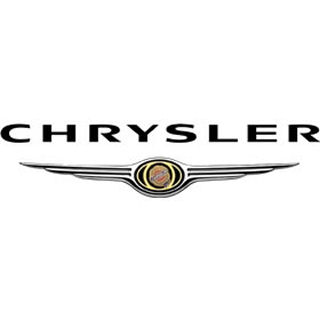
DETROIT — The United Auto Workers union said
Wednesday it has reached a tentative agreement with Chrysler Group LLC,
giving the union a deal with the third and final automaker in this
year’s national contract negotiations.
The UAW said the agreement would add 2,100 new jobs and $4.5 billion in new investments at Chrysler’s U.S. plants.
“Less
than three years ago, Chrysler was teetering on the edge of bankruptcy
as our nation was thrown into the worst economic crisis since the Great
Depression,” UAW President Bob King said in a statement. “This tentative
agreement builds on the momentum of job creation and our efforts to
rebuild America by adding 2,100 new jobs by the end of the agreement in
2015 to communities left in turmoil in the wake of the country’s
economic collapse.”
Chrysler, in a statement, confirmed that it has reached a tentative deal with the UAW.
Details of the agreement include:
—$3,500 signing bonuses, with half to be paid up front and half to be paid when Chrysler reaches certain financial targets.
—Inflation-protection
bonuses of $500 each year of the four-year contract for a total of
$2,000. This is less than the $3,000 GM workers received for a similar
bonus in their contract and the $6,000 Ford workers could gain from
their contract, which has not yet been ratified.
—$500 annual quality bonuses.
—Entry-level,
second-tier workers, now making about $14.65 an hour, will receive
raises to $19.28 an hour by the end of the four-year contract.
First-tier workers, as at GM and Ford, receive no raise.
—A revised profit-sharing formula similar to an agreement ratified by GM workers.
—All new jobs will be entry-level jobs.
—No cap on entry-level hires until 2015.
Chrysler
agreed to invest at the following Chrysler plants if the company’s
26,000 UAW members ratify the deal by a majority vote in coming days:
—Belvidere, Ill., for a new compact vehicle;
—Sterling Heights, Mich., for another new compact vehicle;
—Kokomo, Ind., for a new front wheel drive 9-speed transmission and new rear wheel drive 8-speed transmission;
—Toledo, Ohio, for new steering columns and torque converters;
—Trenton, Mich., to reuse part of the recently idled Trenton North Engine Plant to produce 3.8-iter, V-6 engines.
Both King and UAW Vice President General Holiefield emphasized the need for new jobs from these investments.
“We
did not enter any set of negotiations to break any one of these
companies,” Holiefield said. “We recognize that the corporation is in
its infant stages of a comeback.”
Chrysler has
hired about 2,800 lower-cost, entry-level workers, or about 12 percent
of its workforce. Chrysler and Fiat CEO Sergio Marchionne achieved his
objective of eliminating a 25 percent cap on the percentage of
Chrysler’s workers who could be paid the lower second-tier wage.
From
the outset, both Chrysler executives and UAW officials said they would
be negotiating knowing that Chrysler might not exist without the federal
loans received in 2009.
Chrysler declared bankruptcy on April 30, 2009, and emerged with the help of the federal government and its new owner, Fiat.
Today, Fiat owns 53.5 percent of Chrysler and is expected to increase that ownership to 58.5 percent by year’s end.
“This
agreement is the latest in a remarkable turnaround for Chrysler,” UAW
Vice President General Holiefield said in a statement Wednesday. “The
company declared bankruptcy just a few years ago and with great
sacrifice by UAW Chrysler workers and with federal loans and support
from the Obama administration, Chrysler has paid back the loans in
full.”
As of July, the U.S. government no longer
owns any Chrysler shares and Chrysler no longer owes the government for
the $12.5 billion in loan commitments by the Bush and Obama
administrations.
Still, the UAW and Chrysler
needed to demonstrate they could avoid falling into bad habits and a
protracted labor struggle could have damaged the image of both.
“It
wasn’t too long ago … that we emerged from a very painful restructuring
of the industry,” Al Iacobelli, Chrysler’s vice president of employee
relations, said in July when negotiations began. “We have a
responsibility to the American public as well as to the Canadian
governments.”
By reaching an agreement, the UAW
and Chrysler will avoid a potentially long binding arbitration process
that could have been costly for both sides.
Chrysler workers gave up the right to strike over wages under the terms of its 2009 government restructuring.
If
Chrysler had submitted any issue to arbitration, the UAW could have
submitted an issue of its choosing to the same arbitrator.
But
arbitration would have taken both the company and the union into
uncharted waters for a private corporation and would have taken the
final decision out of their hands.
In the public
sector, where workers cannot strike, arbitration often takes months —
and sometimes even a year to resolve, according to labor experts.
Arbitration
also would have prolonged uncertainty for the company and its workers.
By contrast, GM and Ford would have moved on with labor peace and
investments that preserve or add jobs in the next four years.
———
©2011 the Detroit Free Press
Visit the Detroit Free Press at www.freep.com
Distributed by MCT Information Services














